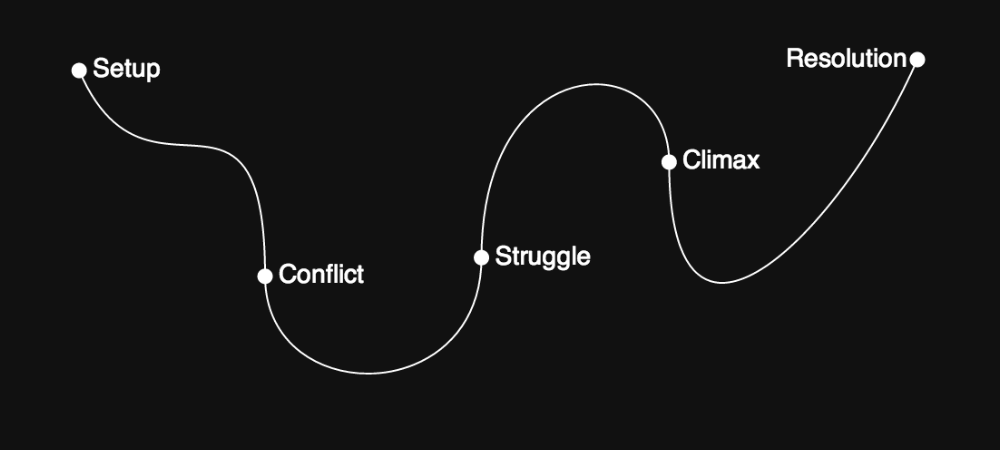Think Stories, not Slides
Thoughts on public speaking.

Narrative Stories, not Bullet Slides
Try to think in prose, not in bullet points. Stories have characters, arcs, and emotions. Add them to my story. Think about my whole journey, and not only the outcome - and I will probably have a good story to tell.
Use story improv to tell a simple story in 5 - 6 sentences. Think about the spine of my story: Setup - Conflict - Struggle - Climax - Resolution. Once I have this structure, I can build on it.
Observe and Learn
Start to look at stories and presentation around me. Recognise the patterns in the ones that work. The stories, the metaphors, the tools, the style - just observe and be aware of them.
Don’t copy them, but internalize them. Soon they will emerge out in my own unique way in my presentations.
Talk, don’t only Think. Then Write it down
Talking allows me to share my idea, and test it out. Verbalising helps me see the flaws in my own ideas and thinking quicker than anything else. There is no better mirror for my thoughts than my own voice.
Writing is a fundamentally different process than thinking or talking. Putting it down on paper helps me add distance between the ideal floating in my head and what may actually work out there. It allows me to see the structure, the synthesis and the stories. Put the first draft on paper - as soon as possible, as rough as possible. Then I can start fixing it.
Edit and Simplify
Peel the onion, one layer at a time. Try to simplify the presentation and focus on the message. Remove the unnecessary details and detours that happened in my journey. Edit and see if there is a simple story to tell.
Focus on subtraction than addition. Don’t worry about losing important material. It will make my presentation better and lighter.
Have a Viewpoint
Have an opinions. Don’t be rigid about it - but it does need to exist. Use the presentation as way of build the connection and logic towards my viewpoint. Bring the audience along on the journey to my viewpoint.
A point of view allows the audience to engage with the content. They may agree or disagree with them, but it will make them think.
Put the Audience First
Never believe I am the audience. And what is interesting to me, may not be that interesting to everyone else. Don’t try and show how clever I am or how amazing my solution was.
Focus on the what will engage the audience. Surprise them and show them something intriguing. Engage them in a way that they will take away something from the presentation. If they can Retain, Recall and Retell, even a part of the story - I have got them engaged.
Substance over Style
Use readable large text. Simple and pleasing graphics. No flying animation or fancy 3D effects. Use multimedia sparsely, but always test the audio first.
Ensure the data tells a visual story. The data graphics engages the visual sense, and compliments the story, which hits the aural senses. Add interactivity when needed but with care.
Finish the damn thing. Then Rehearse
Finish the story. It will not be perfect, but stories only get better as you keep telling them. Don’t let perfection stand in the way of a good presentation.
But do rehearse. Don’t let getting the perfect slide come in the way of the rehearsal. Speak it aloud at least five times. The story will take its own life after that. And it will flow out with ease on the dais.
Add Passion to the Story
Believe in my story. Why does it need to be told? And why am I the best person to tell it? Nothing bores the audience more than an half interested speaker. Bring my passion to play in the story.
Use the stage. Look at the audience, not the slides. Show them that I belong there and I have something interesting to tell.
If you enjoyed reading this essay, you will like the longer mini-book version at amitkaps.com/stories